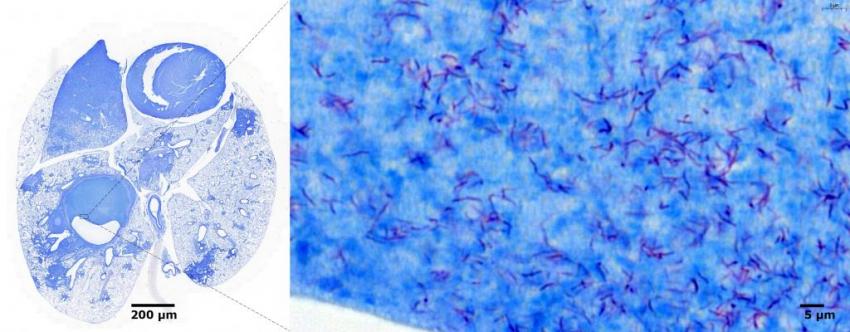Tuberculosis is an infectious disease that still kills 1.5 million people per year worldwide. The causative bacteria probably emerged from an environmental source through adaptations of already existing metabolic pathways. By replicating this evolution in the laboratory, the researchers were able to identify mutations in the bacterial genome that favor persistence in the host lungs. These adaptations allow the bacterium to better resist aggression by the immune response. The revelation of these adaptation pathways opens new avenues of research in the fight against this disease. As co-author, the IPBS TRI technology facilities lead by A.Peixoto was involved in designing and performing image anlaysis for the study. The results of this study are published on July 23 in the journal Nature Microbiology.

Necrotic pulmonary lesions generated in the mouse model by the tuberculosis bacillus. The sections were stained by the Ziehl-Neelsen method and reveal the bacteria in pink that persist in the necrotic zone of the lesion (in blue). © Samantha Milia, Service d’Histopathologie Expérimentale (CREFRE, INSERM, Toulouse)


